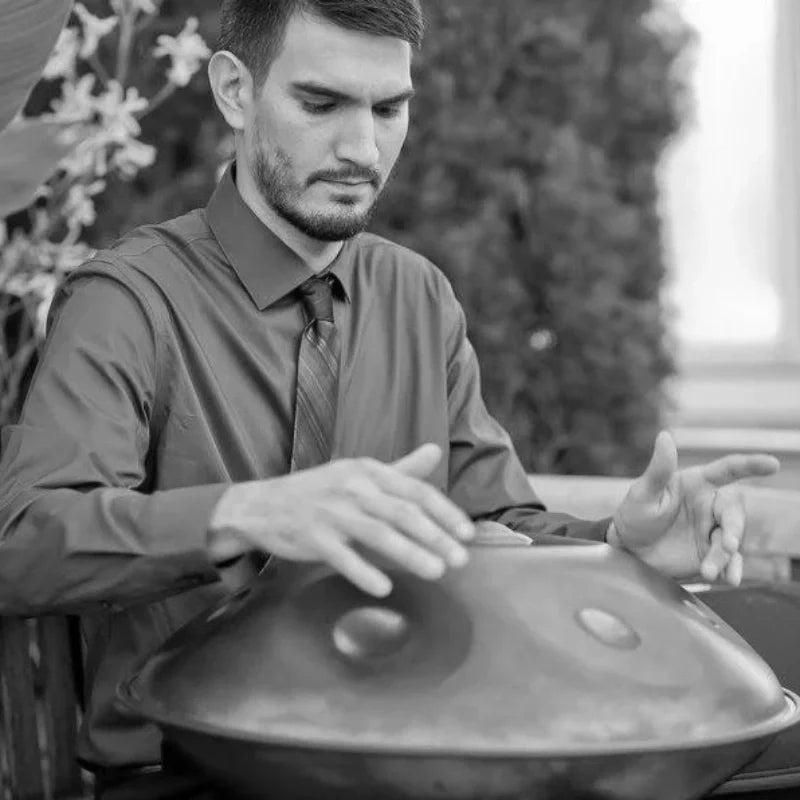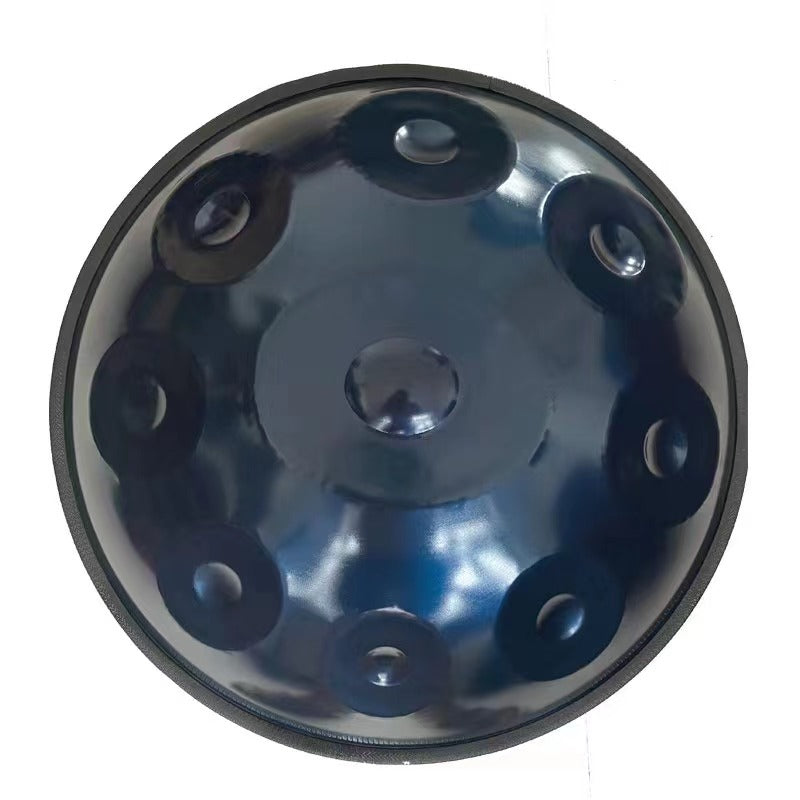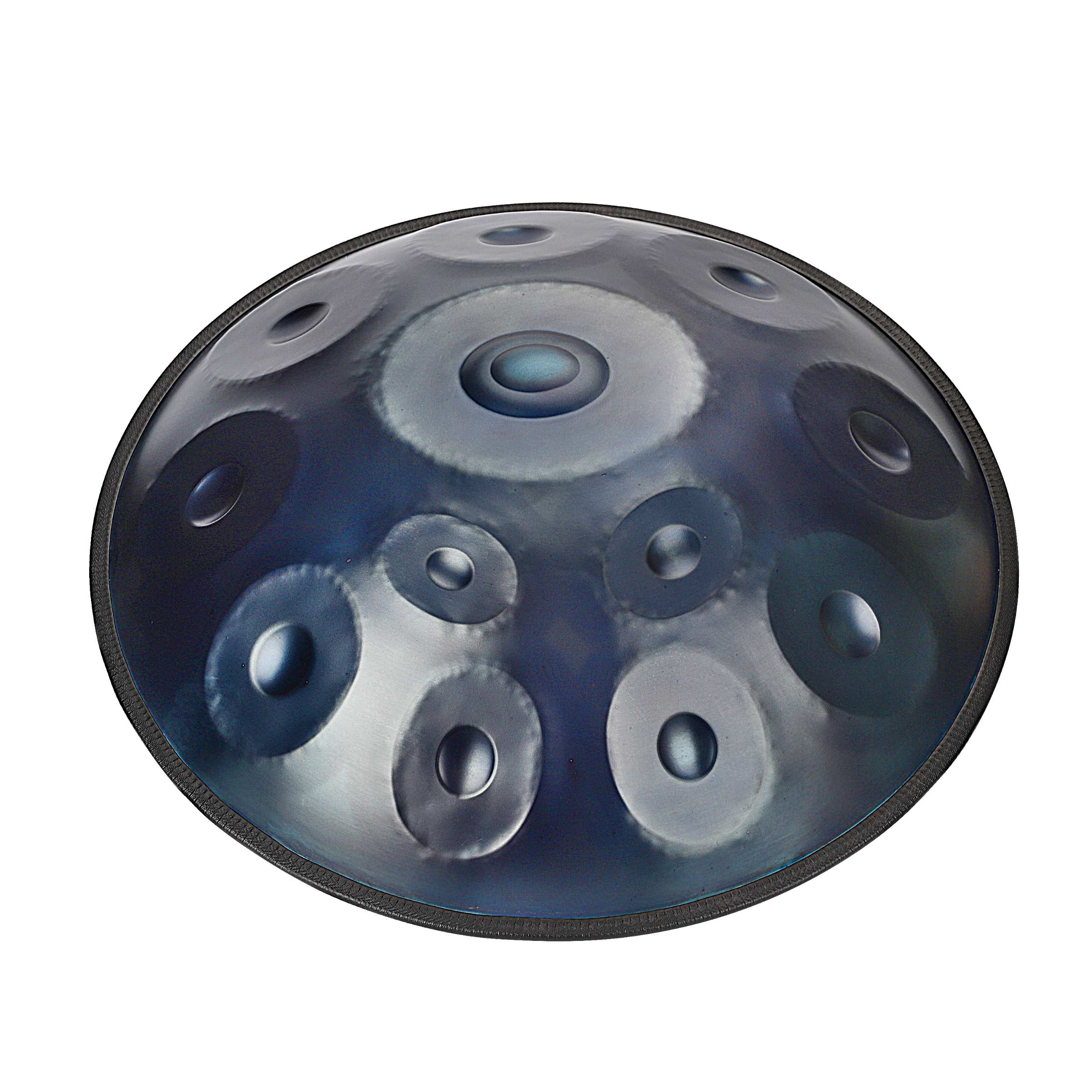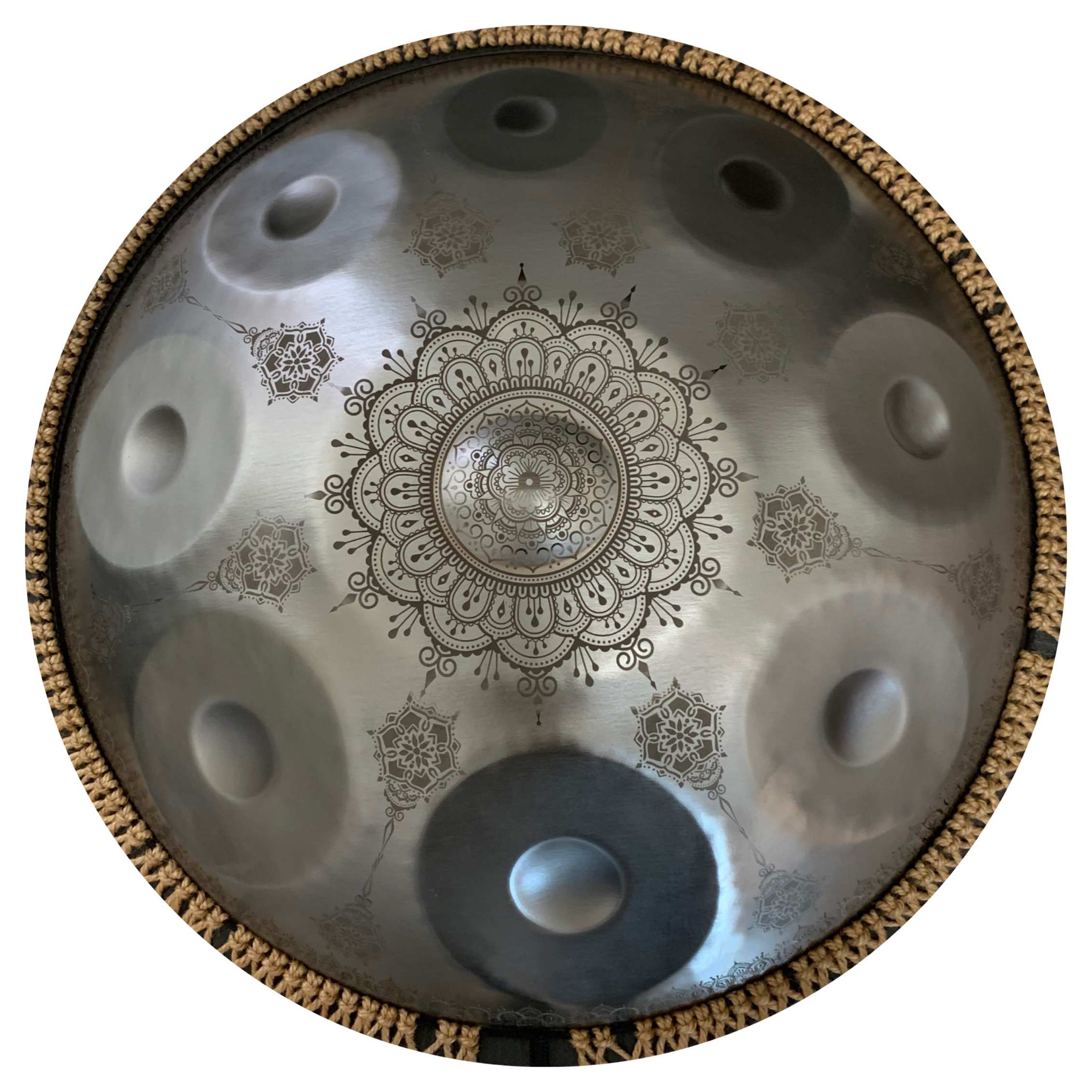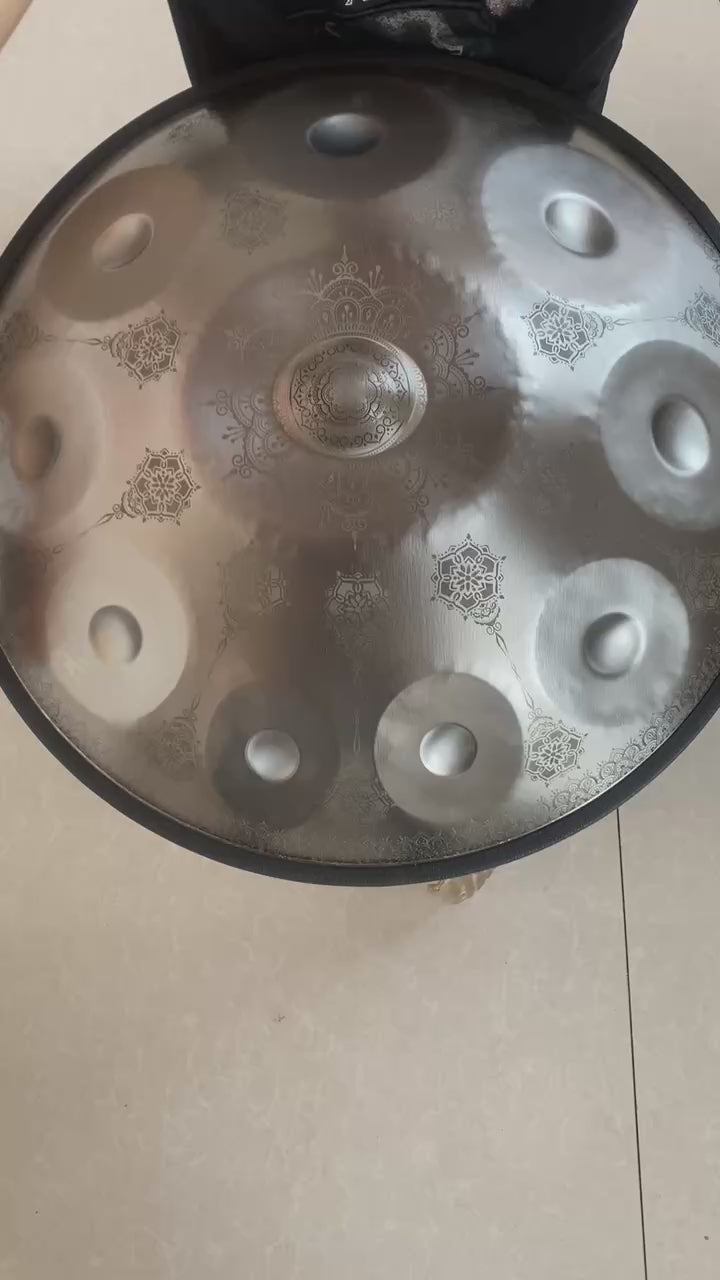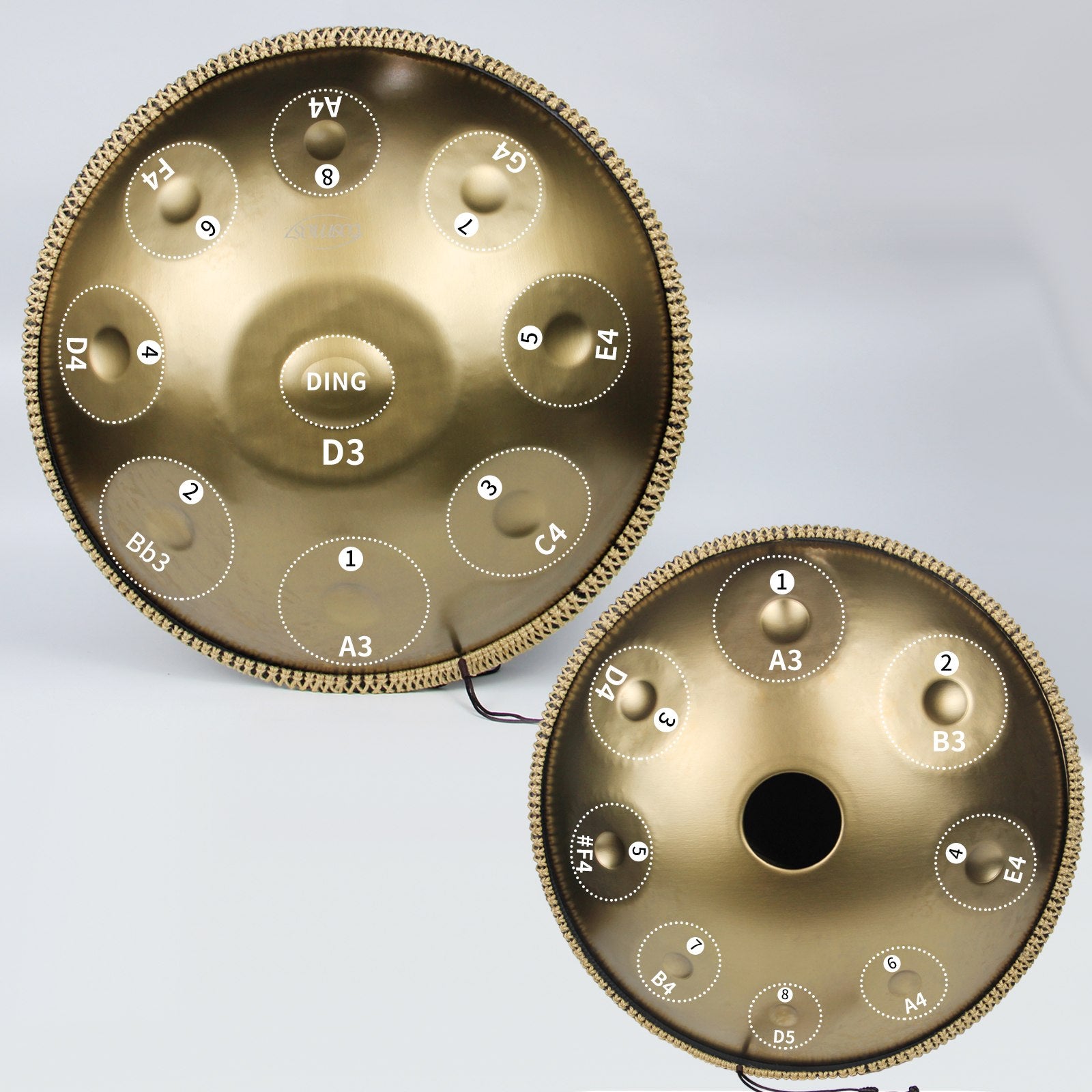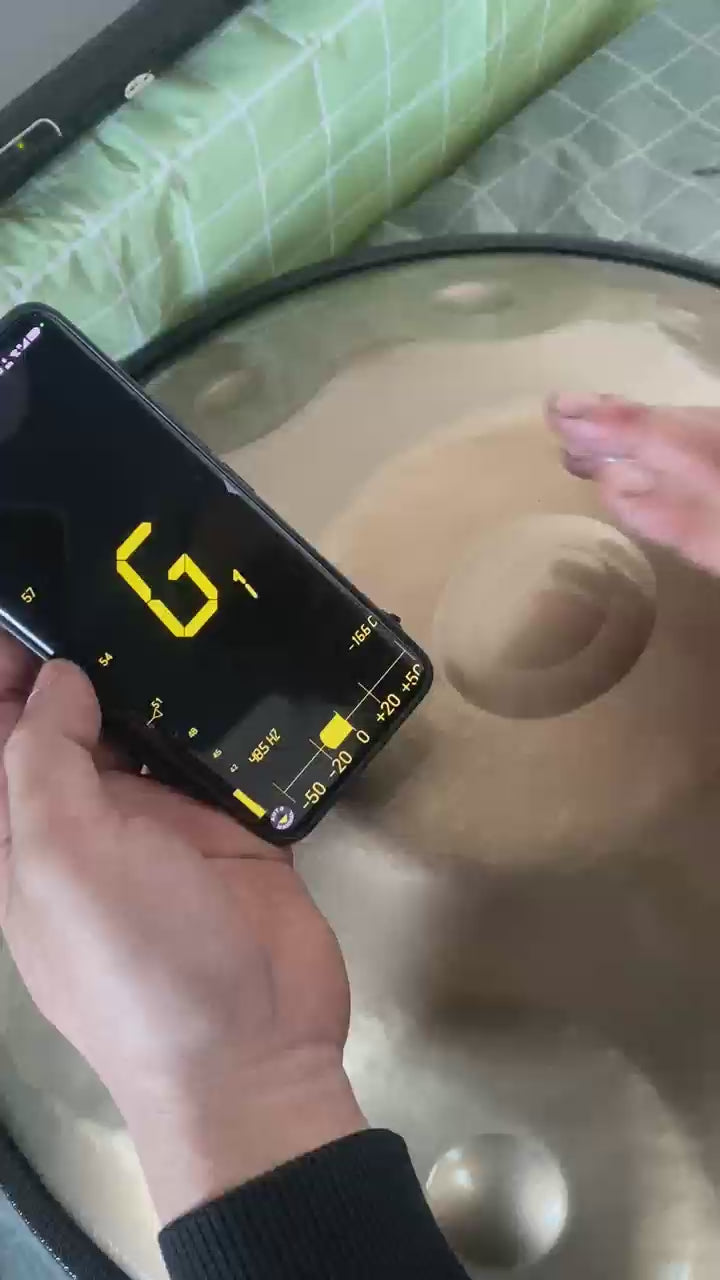L'histoire du handpan, également connu sous le nom de Hang drum ou Pantam, est celle d'une créativité immense et d'un mélange de cultures. Bien qu'il soit encore nouveau et moderne dans son design, la conception du handpan trouve son origine au milieu du XXe siècle, en lien avec le steelpan de Trinité-et-Tobago. Ci-dessous se trouve une riche élaboration du développement de ces instruments et des méthodes appliquées dans le processus de sélection.

Débuts précoces : Influence du Steelpan
Le cadre de l'histoire se déroulait à Trinidad et Tobago dans les années 1930, lorsque des barils de pétrole abandonnés étaient transformés en instruments de musique, en particulier des steelpans. Ces instruments, qui ont été développés selon les normes les plus élevées par des maîtres tels qu'Ellie Mannette, se distinguaient des autres par leur timbre et, de ce fait, sont devenus un élément essentiel de la musique caribéenne.
L'évolution ultérieure du steelpan a été accompagnée d'un accord harmonique où des harmoniques supplémentaires (octave et quinte composée) ont été introduites à chaque note, formant ainsi les sons modernes et riches à la fois des steelpans et des handpans modernes.
McFerrin reconnaît la naissance du Hang qu'il a développé à partir d'une idée en un tambour qu'il peut jouer.
Le Hang, le successeur direct du steelpan, a été dévoilé en 2000 par PANArt, une entreprise suisse détenue par Felix Rohner et Sabina Schärer. Le Hang incorpore plusieurs qualités d'autres instruments conventionnels, tels que le gamelan indonésien ainsi que le ghatam indien. Le Hang a été présenté au public lors de la Musikmesse Frankfurt en 2001 et avait un aspect spécifique avec un "ding" central et des champs de sept à huit tons.
En raison du son sacré et résonnant du Hang, il est devenu populaire très rapidement. Ce processus de production prolongé et soigné de PANArt, ainsi que le fait que l'instrument n'était fabriqué qu'en très petites quantités, n'ont fait qu'enrichir la notion romantique de l'instrument. Les personnes cherchant à posséder le Hang devaient rédiger manuellement une lettre avec un design expliquant pourquoi elles avaient besoin de l'ensemble, et cela pouvait prendre des mois, voire des années, pour obtenir une réponse.
Évolution et Diversification
Plus de gens en ont entendu parler, et avec l'augmentation de la demande et en raison de la production à petite échelle des Handpan PANArt, d'autres personnes ont commencé à créer des instruments similaires, ce qui a conduit à l'utilisation du terme « Handpan » en 2007 par Kyle Cox de Pantheon Steel. C'est un terme qui désigne tous les instruments en acier similaires au Hang, joués sans machine.
La communauté handpan a commencé à croître rapidement, et des centaines de fabricants du monde entier créaient de nouveaux styles, des motifs d'accord et des types d'acier. Ainsi, des notes supplémentaires ont été ajoutées, la disposition des champs de tonalité a été modifiée et améliorée, et un accordage de haute qualité a été utilisé pour augmenter les possibilités de la mélodie et de l'accompagnement de l'instrument.
La croissance du pantam peut être attribuée à différents facteurs, qui incluent ;
Pantam est le terme hébreu local qui appartient à la même famille de Handpan et de Hang drum, mais qui souligne les variations géographiques des termes utilisés pour les mêmes instruments de musique. Le Pantam peut être considéré comme populaire dans la sous-culture handpan et est un membre régulier des Goyangs de handpan.
Choisir le bon Hang Drum pour vous
Comment choisir le bon Hang drum (ou handpan ou Pantam) dépend du type de son et de musique que vous aimez, de votre expérience et de votre budget. Ci-dessous se trouve un guide utile sur la façon de procéder au choix au cas où vous seriez bloqué.
Comprendre l'instrument
Structure et Son : Les handpans, comme leur nom l'indique, sont des alliages d'acier faits à la main, constitués de deux coques hémisphériques liées ensemble par de l'époxy ; la coque supérieure possède des champs de tonalité en acier tourné. Ces instruments sont fabriqués en métal, et chacun d'eux a au moins une note centrale, connue sous le nom de ding, avec sept autres notes circulaires. La coque inférieure a généralement une fente connue sous le nom de Gu, qui aide à la résonance. Chaque handpan est effectivement construit avec une échelle particulière, réduisant ainsi le défi souvent posé par de mauvaises notes sur l'instrument de musique. Lors du choix de certains outils, les débutants sont généralement confrontés au défi de jouer la mauvaise note, mais avec ce handpan, toutes les tonalités sont bonnes.
Matériaux : Les handpans des pionniers étaient fabriqués en acier nitruré, car ils sont plus résistants à la rouille et produisent un meilleur son. Les handpans contemporains sont également fabriqués en acier inoxydable et dans tout autre alliage sur mesure qui les rend plus résistants et à sonorité élevée.
Déterminer vos besoins
Style musical : Quel type de musique voulez-vous vous assurer qu'il y a de la place pour tous ces styles ou quel que soit le type de musique que vous souhaitez créer ? Chaque type de musique peut être joué avec des handpans, allant de la musique méditative et ambiante à des morceaux plus dynamiques et intenses. Sélectionnez une échelle appropriée pour le morceau de musique que vous écrivez : majeur pour une musique joyeuse et gaie, mineur pour une musique triste et contemplative, et exotique pour une musique éthique.
Niveau de compétence : Lorsque vous choisissez votre handpan, ne compliquez pas trop les choses si vous êtes un débutant ; optez pour un modèle avec légèrement moins de notes (8-9) au maximum. Par exemple, à mesure que vous gagnez en expérience, vous pourriez avoir besoin de plus de notes et d'une variété différente d'échelles de l'instrument, et ainsi de suite.
Budget : Les handpans sont des instruments faits à la main et peuvent donc coûter une somme d'argent considérable, qui peut varier de 1000 $ à 3000 $ ou plus. Gardez à l'esprit la situation financière dans laquelle vous vous trouvez et rappelez-vous que la qualité peut se refléter dans le prix. Un meilleur son et une durabilité d'un handpan sont obtenus lorsqu'un individu acquiert un handpan de qualité auprès d'un fabricant qualifié.
Essayer avant d'acheter
Si vous le pouvez, jouez autant de handpans que possible avant de décider d'en acheter un pour vous. En tenant et en touchant différents instruments de musique, vous serez en mesure de déterminer le type de réponse qu'ils produisent, leur hauteur, et même la manière dont ils peuvent être joués, parmi d'autres facteurs. Si une demande en personne est impossible, recherchez des vidéos et écoutez les accordages des instruments que vous allez essayer.
Choisir un fabricant réputé
Recherche : Il est recommandé de rechercher des fabricants de handpan ayant une bonne réputation. Cherchez des avis, allez dans des communautés et discussions sur le handpan, et demandez des conseils à d'autres joueurs de handpan. C'était si emblématique par des designers respectés tels que Isthmus Instruments, Pantheon Steel, et d'autres qui connaissent leur travail.
Personnalisation : En ce qui concerne la personnalisation, certains fabricants offrent la possibilité de choisir l'échelle, le matériau et le design qui vous conviennent. Il est temps de parler aux fabricants, de poser des questions et d'obtenir des recommandations sur la façon de faire un bon choix.
Éviter les arnaques : Il est conseillé de ne pas les prendre auprès de sources inconnues ou de sources d'occasion. Assurez-vous que l'instrument n'est pas endommagé et qu'il est correctement accordé s'il doit être utilisé lors de la performance. Acheter directement auprès d'un fabricant est généralement plus sûr car cela s'accompagne de l'assurance de l'originalité et de la qualité de l'instrument.
Conclusion
Le handpan, Hang drum et Pantam proviennent de l'avancement du steelpan, développé avec un solide arrière-plan historique. Ces évolutions ont conduit à la formation de nombreux types de fabricants et de joueurs qui ont tous contribué au développement ultérieur de l'instrument. Choisir un Hang drum nécessite de prendre en compte les facteurs suivants : le type de musique que vous souhaitez jouer, la maîtrise ou la dextérité, et surtout, votre budget ; choisir le bon fabricant de Hang drum est crucial pour obtenir le bon Hang drum. Dans tous les cas, le handpan est un instrument de musique qui apportera à chacun beaucoup de plaisir et d'incroyables émotions dès les premières minutes de son utilisation.

